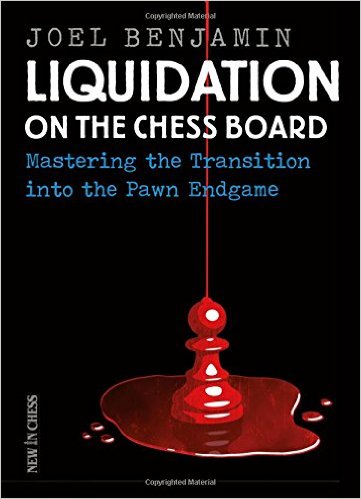The following chess endgame principles infographic, illustrates the 8 most important things you need to think about when playing an endgame.

Based on 12 Chess Endgame Principles
Author: chessbuzz
-
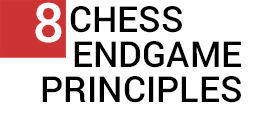
8 Chess Endgame Principles
-

Top 5 Free Chess Databases

In order to improve at chess, you have to review your games and you also have to review and learn from the chess games of past masters. Storing your games in a chess database allows you to keep a historical account of all of your important chess games, and allows you to learn from your mistakes and track your progress. Below is a list of both online and offline chess databases that allow you to either store, analyze and review your own chess games or review the games of masters.Free Online Chess Databases
Chess-DB Very large online database that allows you to store your own games as and it also contains a large database of master games. The database contains games from 1396432 players, 562725 chess tournaments, and 8,978,091 chessgames Chess Microbase Save, annotate, publish and share your games. Allows you to create a database of your own games. Stores the games in PGN format, and allows for annotations using text and graphics via the browser. Perfect for storing and annotating your own games. Save small, relevant game collections. Ideal for coaches wanting to share lessons or players doing opening preparation. Chess Tempo Chess Database Provides over two million searchable chess games. The database can be searched via many criteria, including chess players, chess opening, player ratings, game result, and the year the chess game was played. Chess opening statistics can been viewed on the display to the right of the board. You can start from any position by using the paste FEN/moves button directly below the chess board.Free Desktop Chess Databases
ChessBase Reader 2013 The latest ChessBase Reader conveniently displays all installed databases and training titles. Opens all standard file formats (.cbh, .cbf, .pgn). Allows you to play through games on the chessbase chess board. Allows you to watch ChessBase training videos. Database is limited to . Shane's Chess Information Database (SCID) SCID allows you to view, edit, and manage very large collections of chess games. It is a very powerful open source free chess database program. Works on Windows, Linux and OSX operating systems. Can read millions of games in PGN format.What is your favorite free chess database?[feather_share] -

Chess Board Visualization Training
Chess board visualization training is necessary in order to not miss tactics, to be able to see more combinations and to improve your chess level. Chess board visualization does not come naturally to all chess players and is something that needs to be worked on. Chess visualization is something that must be trained, and should be part of a regular chess training regimen. This type of training is one of the most neglected areas in chess improvement training, and it is the one that can increase your chess rating the most.
Chess board visualization training will improve your ability to calculate long variations and will make you a more confident and better chess player. Visualization training should take place 3-4 times per week in 5-10 minute sessions.
Board Visualization Exercise #1
Arrange the pieces on a board and look at the normal developing move for all the pieces. The White knights develop to c3 and f3, while the Black knights develop to c6 and f6. The light squared bishop develops to e2,d3,c4,b5, etc. Once you have studied the knights, bishops (regular and fianchetto positions) the castled King and rook and the four central squares (e4,d4,e5,d5) you remove all of the pieces and point and name out loud all of the normal developing squares for the pieces.
After repeating exercise 1 for the first 2-3 sessions you can then move on to exercise 2.
Board Visualization Exercise #2
Same concept as in exercise #1 but this time you do not look at the board.
– note where the four knights normally develop
– note where the four bishops normally develop
– note the four squares for the fianchettoed bishops
– note the squares where the King and rook are placed after castlingBoard Visualization Exercise #3
After mastering exercise 1 and exercise 2 you are ready to move on to the third chess board visualization exercise.
Using the board look at all of the squares controlled by:
– a knight on c3
– a knight on f3
– a knight on c6
– a knight on f6Then, without the use of the board repeat the exercise again visualizing the squares controlled by the knight on f3, c6 and f6.
Perform this exercise for two sessions or until you feel comfortable. You should also repeat exercise #2 until you are extremely comfortable performing it.
Remember it is important to build upon fundamentals, and exercise # 2 is an important building block in developing chess visualization skills.
Chess Board Visualization Exercise #4
Previous Exercises:
– Exercise 1
– Exercise 2
– Exercise 3For exercise 4, using the board look at all of the squares controlled by:
– the f1-bishop developed to e2 (place only this bishop on the board)
– the f1-bishop developed to d3, c4, b5
– the f8-bishop developed on e7, d6, c5, b4
– all remaining bishops as aboveThen, without the use of the board repeat the exercise again visualizing the squares controlled by the bishops above.
Perform this exercise for 2 sessions or until you feel comfortable.
Chess Board Visualization Exercise #5
For exercises 1-4 visit the chess exercises page.
It is very important that you have mastered exercises 1-4 before starting on this exercise.
Without looking at the board, tell all the squares controlled by:
– a bishop on g2
– a bishop on g7
– a bishop on e5
– a bishop on b7
– a bishop on d2
– a bishop on c5Chess Board Visualization Exercise #6
It is very important that you have mastered exercises 1-5 before starting on this exercise. For exercises 1-5 visit the chess exercises page.
Without looking at the board, tell all the squares controlled by:
– a bishop on b2
– a bishop on b7
– a bishop on a5
– a bishop on h4
– a bishop on d4
– a bishop on c4Chess Board Visualization Exercise #7
It is very important that you have mastered exercises 1-6 before starting on this exercise. For exercises 1-6 visit the chess exercises page.
Without looking at the board, tell all the squares controlled by:
– a knight on c3
– a knight on e2
– a knight on f6
– a knight on d4Chess Board Visualization Exercise #8
It is very important that you have mastered exercises 1-7 before starting on this exercise. For exercises 1-7 visit the chess exercises page.
Without looking at the board, tell all the squares controlled by:
– a knight on c6
– a knight on f3
– a knight on b2
– a knight on c5
– a knight on h7[feather_share]
-

The Chess Directory Project

Chess Directory Project The Chess Directory project aims to consolidate all online chess related information into one place. Currently the Chess Directory has 11 different chess related categories with 50 chess related sites already listed, and is growing quickly.
Popular categories in the chess directory include:
If you have a chess related business , you are a chess coach, or if you frequent a site that hasn’t been included, then feel free to submit your site for free to the Chess Directory.
The aim is to have one place where all good quality chess sites can easily be discovered.
[feather_share]
-
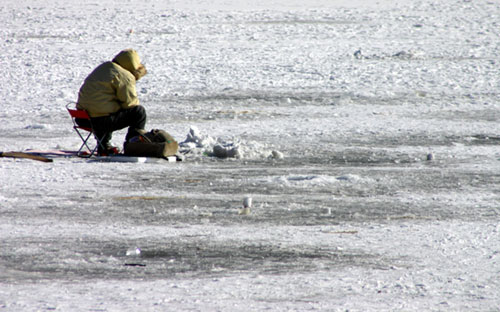
Chess Tips: Patience at the Chess board
“Lack of patience is probably the most common reason for losing a game, or drawing games that should have been won.” – Bent Larsen
Patience in Chess
This is the first entry in our chess tips series. Winning and losing in chess is many times a result not of what you do not know, but of your behavior over the chess board. If your improvement has stalled, many times it is due to chess psychology issues. Being impatient at the chess board is one of those chess psychology problems that need to be identified and resolved. Impatience is a behavior that leads to not fulfilling your full potential in chess. Review the games of masters and a common denominator is how they wield powerful yet patient moves whenever the opportunity arises. The virtue of patience must be acquired if you wish to cross the elusive 2000 elo threshold.
Study and practice increases your internal pattern recognition database, improves your calculation and evaluation skills and increases your knowledge of typical positions. This all adds up to making you a stronger more skilled player, but many times you continue to lose games and improvement seems slow and arduous. Your improvement does does not keep up with your investment in studying and practicing chess because of errors of chess psychology.
Chess improvement is composed of skill, knowledge and psychology. While skill and knowledge can be trained through books and coaching the psychological component is dependent on finding the weaknesses in your thought process and decision making and addressing them. Many items are not taught to chess beginners who are learning to play chess, yet it is an important component that holds many chess players back.
The Psychology of Patience
In evolutionary psychology and in cognitive neuroscience patience is studied as a decision making problem, involving the choice of either a small short-term reward or a more valuable long-term reward This is despite the often greater benefits associated with long-term rewards.
When you have a strong move available to you, yet you delay to play it and continue to build up your position while leaving the threat on the table, this adversely impacts your opponent psychologically (see Capablanca – Ragozin Moscow 1935). On every move your opponent needs to calculate variations that deal with parrying your threat, yet to their surprise after all their calculation, you play another move that leaves the threat on hold yet makes your position even stronger.
Patience in chess boils down to thinking before you move. By being patient you are able to play the best move and prevent mistakes in your play.
Patience Is Required
Impatience is the leading cause of blunders. Quick thoughtless moves lead to the weakening of your position and they lead to losing a drawn game or drawing a won game. Being impatient at the chessboard prevents you from playing the best move possible, since you are not giving the position the amount of thought it requires. Being inpatient gets in the way of improvement. While patience is required throughout the entire game, there are critical moments during a game where it helps to remind yourself that you need to not hurry and be patient.- Tension filled positions (central tension or attacking)
- Complex positions
- Won positions
- Positions where you have a tactic on the board. Don’t get excited, and always ask yourself if our opponent has a killer in-between move, or if it is a trap.
- Positions where you are defending a strong attack. In these cases there is usually only one move that prevents an immediate loss.
- Positions where exchanges are imminent.
- Positions where the pawn structure is going to change.
"You can't overestimate the importance of psychology in chess, and as much as some players try to downplay it, I believe that winning requires a constant and strong psychology not just at the board but in every aspect of your life." - Garry Kasparov
Becoming a More Patient Player
- Remind yourself to be patient throughout the game, especially in the positions described above.
- Always ask yourself if your opponent’s last move was a mistake.
- Always ask yourself if the move you are about to make is a mistake. Does it lose to an immediate tactic? Is it a blunder?
- Implement Blumenfeld’s rule (see below)
- Always apply Tarrasch’s rule - When you see a good move, look for a better one.
- Practice mindfulness and meditation
Blumenfeld's Rule
When you have finished your calculations, write down the move you have decided upon on the score sheet. Then examine the position for a short time 'through the eyes of a patzer'. Ask whether you have left a mate in one on, or left a piece or a pawn to be taken. Only when you have convinced yourself that there is no immediate catastrophe for you should you make the planned move." - Kotov
Patience in Practice : The Patience of a Master
Delaying your attack to prevent opponent counterplay
[pgn height=625 initialHalfmove=0 autoplayMode=none] [Event "Monte Carlo"] [Site "Monte Carlo"] [Date "1903.03.06"] [Round "18"] [White "Pillsbury, Harry Nelson"] [Black "Tarrasch, Siegbert"] [Result "0-1"] [ECO "C63"] [PlyCount "166"] [EventDate "1903.02.10"] [EventType "tourn"] [EventRounds "26"] [EventCountry "MNC"] [Source "ChessBase"] [SourceDate "1999.07.01"] 1. e4 e5 2. Nf3 f5 3. Bb5 Nc6 4. Nc3 Nf6 5. exf5 e4 6. Qe2 Qe7 7. Bxc6 bxc6 8. Nh4 d5 9. d4 a5 10. Bg5 Ba6 11. Bxf6 Qxf6 12. Qh5+ Kd7 13. Ng6 Qxd4 14. Nxh8 Bc5 15. Qh4 Rxh8 16. Rd1 Qb4 17. Qg4 Kd8 18. Qxg7 Re8 19. Qf6+ Kd7 20. a3 Qb6 21. Rd2 e3 22. fxe3 Bxe3 23. Nxd5 Bxd2+ 24. Kxd2 Qf2+ 25. Kd1 Qe2+ 26. Kc1 cxd5 27. Rd1 c6 28. Qh4 Qxg2 29. Qxh7+ Re7 30. Qh4 Qe4 31. Qh8 Qxf5 32. Qa8 Bc8 33. Qa7+ Ke8 34. Qxa5 Qf4+ 35. Kb1 Qxh2 36. Qc5 Bb7 37. b4 Qe2 38. Rh1 Rf7 39. Rh8+ Kd7 40. Rh6 Rf1+ 41. Kb2 Qe7 42. Qd4 Re1 43. Rh5 Kc7 44. Qf4+ Kb6 45. Qd4+ c5 46. bxc5+ Qxc5 47. Rh6+ Bc6 48. Qf6 Qb5+ 49. Kc3 Qc4+ 50. Kb2 Qb5+ 51. Kc3 Qc4+ 52. Kb2 Qb5+ 53. Kc3 Re3+ 54. Kd2 Re2+ 55. Kd1 Re8 56. Kd2 Qe2+ 57. Kc1 Qe1+ 58. Kb2 Qe5+ 59. Qxe5 Rxe5 60. Rh4 Re4 61. Rh8 Kc5 62. Rc8 Re8 63. Rc7 Kd6 64. Rh7 Bb5 65. Kc3 Ba4 66. Rh2 Re4 67. Rg2 Kc5 68. Rh2 Re3+ 69. Kb2 Bb5 70. Rh8 Re2 71. Rc8+ Kd4 72. Kb3 Bc4+ 73. Kb2 Bd3 74. Kb3 Bf5 75. Rc7 Re8 76. c3+ Kd3 77. Rc5 Rb8+ 78. Ka4 Be4 79. Rc7 Kc2 80. Rc6 Bd3 81. Rc5 Bc4 82. Ka5 Kxc3 83. a4 Ra8+ 0-1 [/pgn]Keeping the tension
[pgn height=550 initialHalfmove=0 autoplayMode=none] [Event "DSB-15.Kongress"] [Site "Nuremberg"] [Date "1906.??.??"] [Round "6"] [White "Duras, Oldrich"] [Black "Chigorin, Mikhail"] [Result "0-1"] [ECO "C97"] [PlyCount "114"] [EventDate "1906.??.??"] 1. e4 e5 2. Nf3 Nc6 3. Bb5 a6 4. Ba4 Nf6 5. O-O Be7 6. Re1 b5 7. Bb3 d6 8. c3 O-O 9. h3 Na5 10. Bc2 c5 11. d4 Qc7 12. Nbd2 Kh8 13. Nf1 Ng8 14. Ne3 Be6 15. Nf5 Bf6 16. d5 Bd7 17. g4 g6 18. Ng3 Bg7 19. Kh2 Nc4 20. Nd2 Nb6 21. h4 Qd8 22. Kg2 Qxh4 23. f3 Bh6 24. Rh1 Qf6 25. Rh3 Qg7 26. Kf2 Bf4 27. Ndf1 Rae8 28. Ne3 Re7 29. Qh1 f6 30. Ng2 Bg5 31. b3 Ref7 32. Be3 Ne7 33. Nh4 Bxe3+ 34. Kxe3 f5 35. gxf5 gxf5 36. exf5 Qg5+ 37. Ke2 Nbxd5 38. Ke1 Qe3+ 39. Ne2 Nf4 40. Rh2 Nxe2 41. Rxe2 Qxc3+ 42. Kf2 Qd4+ 43. Kg2 Rg7+ 44. Ng6+ Nxg6 45. fxg6 Bc6 46. Rf2 Rxf3 47. Rxf3 Bxf3+ 48. Kxf3 Qc3+ 49. Ke4 Qxc2+ 50. Kd5 Qd3+ 51. Kc6 Qxg6 52. Kb6 d5+ 53. Kxc5 Rc7+ 54. Kxd5 Rd7+ 55. Kxe5 Qe8+ 56. Kf4 Rf7+ 57. Kg3 Qe3+ 0-1 [/pgn]The threat is stronger than the execution
The player who has the threat has 2 advantages: the threat and the choice of when the threat will be executed. (1) Having the threat plays against your opponent’s psyche. Every move the threat exists requires your opponent to worry about it and include it in every calculation. [pgn height=550 initialHalfmove=20 autoplayMode=none] [Event "Moscow"] [Site "Moscow"] [Date "1935.02.22"] [Round "6"] [White "Capablanca, Jose Raul"] [Black "Ragozin, Viacheslav"] [Result "1-0"] [ECO "E32"] [PlyCount "97"] [EventDate "1935.02.15"] [EventType "tourn"] [EventRounds "19"] [EventCountry "URS"] [Source "ChessBase"] [SourceDate "1999.07.01"] 1. d4 Nf6 2. c4 e6 3. Nc3 Bb4 4. a3 Bxc3+ 5. bxc3 d6 6. Qc2 O-O 7. e4 e5 8. Bd3 c5 9. Ne2 Nc6 10. d5 Ne7 11. f3 Nd7 12. h4 Nb6 13. g4 f6 14. Ng3 Kf7 15. g5 Ng8 16. f4 Ke8 17. f5 Qe7 18. Qg2 Kd8 19. Nh5 Kc7 20. gxf6 gxf6 21. Ng7 { Capablanca leaves the knight on g7 for an incredible 25 moves!} Bd7 22. h5 Rac8 23. h6 Kb8 24. Rg1 Rf7 25. Rb1 Qf8 26. Be2 Ka8 27. Bh5 Re7 28. Qa2 Qd8 29. Bd2 Na4 30. Qb3 Nb6 31. a4 Rb8 32. a5 Nc8 33. Qa2 Qf8 34. Be3 b6 35. a6 Qd8 36. Kd2 Qf8 37. Rb2 Qd8 38. Qb1 b5 39. cxb5 Nb6 40. Qa2 c4 41. Qa3 Qc7 42. Kc1 Rf8 43. Rbg2 Qb8 44. Qb4 Rd8 45. Rg3 Rf8 46. Ne6 Bxe6 47. dxe6 Rc7 48. Qxd6 Ne7 49. Rd1 1-0 [/pgn]Patient Build up
[pgn height=525 initialHalfmove=0 autoplayMode=none] [Event "Dubai ol (Men)"] [Site "Dubai"] [Date "1986.11.18"] [Round "4"] [White "Karpov, Anatoly"] [Black "Ribli, Zoltan"] [Result "1-0"] [ECO "A30"] [WhiteElo "2725"] [BlackElo "2585"] [PlyCount "111"] [EventDate "1986.11.15"] [EventType "team-swiss"] [EventRounds "14"] [EventCountry "UAE"] [Source "ChessBase"] [SourceDate "1994.03.01"] [WhiteTeam "Soviet Union"] [BlackTeam "Hungary"] [WhiteTeamCountry "URS"] [BlackTeamCountry "HUN"] 1. c4 c5 2. Nf3 Nf6 3. Nc3 e6 4. g3 b6 5. Bg2 Bb7 6. O-O d6 7. d4 cxd4 8. Qxd4 a6 9. Rd1 Be7 10. b3 Nbd7 11. e4 Qc8 12. Bb2 O-O 13. Nd2 Qc7 14. Rac1 Rac8 15. h3 Rfe8 16. a3 Qb8 17. b4 Red8 18. Qe3 Ba8 19. Qe2 Ne8 20. Nf1 Bb7 21. Kh2 Nef6 22. Nd2 Ne8 23. Re1 Ba8 24. Nb3 Bg5 25. Rc2 Rc7 26. f4 Bf6 27. Rec1 Rdc8 28. Nd1 Bb7 29. Qd3 Bxb2 30. Nxb2 Qa8 31. Nd1 a5 32. Nd4 Rd8 33. Nb5 Rcc8 34. Ndc3 Qb8 35. Rd1 Ndf6 36. Rcd2 h6 37. Qe2 Ba8 38. Kg1 Bc6 39. Kh2 e5 40. f5 Qa8 41. g4 Qb8 42. h4 Qb7 43. Bf3 Qe7 44. Kg3 axb4 45. axb4 d5 46. cxd5 Bxb5 47. Nxb5 Qxb4 48. g5 hxg5 49. hxg5 Nh7 50. d6 Rc5 51. Rb2 Qc4 52. Qh2 Rxb5 53. Qxh7+ Kxh7 54. Rh2+ Kg8 55. Rdh1 f6 56. Rh8+ 1-0 [/pgn]Don't Hurry When You Are Winning
[pgn height=600 initialHalfmove=0 autoplayMode=none] [Event "Karlsbad"] [Site "Karlsbad"] [Date "1923.05.15"] [Round "14"] [White "Alekhine, Alexander"] [Black "Chajes, Oscar"] [Result "1-0"] [ECO "D64"] [PlyCount "127"] [EventDate "1923.04.??"] [EventType "tourn"] [EventRounds "17"] [EventCountry "CSR"] [Source "ChessBase"] [SourceDate "1999.07.01"] 1. d4 Nf6 2. c4 e6 3. Nf3 d5 4. Nc3 Nbd7 5. Bg5 Be7 6. e3 O-O 7. Rc1 c6 8. Qc2 a6 9. a3 Re8 10. h3 b5 11. c5 Nh5 12. Bf4 Nxf4 13. exf4 a5 14. Bd3 g6 15. h4 Bf6 16. h5 Nf8 17. g3 Ra7 18. Nd1 Bg7 19. Ne3 f5 20. Qe2 a4 21. Nc2 Rae7 22. Kf1 Bf6 23. Ne5 Bxe5 24. Qxe5 Qc7 25. Qf6 Rf7 26. Qh4 Qe7 27. hxg6 Nxg6 28. Qh5 Qf6 29. Be2 Rg7 30. Qf3 Nf8 31. Qe3 Ree7 32. Nb4 Bd7 33. Bh5 Ng6 34. Nd3 Be8 35. Ke2 Kf8 36. Kd2 Rb7 37. Bf3 Ke7 38. Rhe1 Nf8 39. Nb4 Kd8 40. Kd3 Rge7 41. Qd2 Ra7 42. Rh1 Rec7 43. Rh2 Bg6 44. Qe3 Kc8 45. Rch1 Kb7 46. Kd2 Re7 47. Nd3 Nd7 48. Bh5 Ra8 49. Bxg6 hxg6 50. Rh7 Rae8 51. Ne5 Nf8 52. Rh8 Rg7 53. Nf3 Rb8 54. Ng5 Re7 55. Qe5 Qxe5 56. fxe5 Ra8 57. Rg8 b4 58. Rhh8 Ree8 59. axb4 Ka7 60. Kc3 Ka6 61. Nf7 Rec8 62. Nd6 Rd8 63. Rh1 Rd7 64. Ra1 1-0 [/pgn] I want to thank chess coach IM Alejandro Moreno for his invaluable feedback in writing this post. [feather_share] -
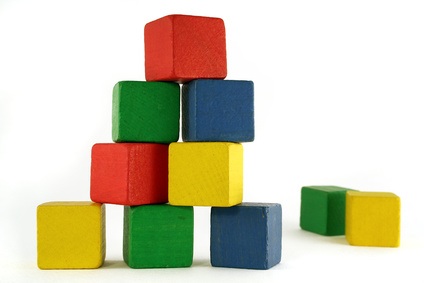
Thought Process Framework
Moves are linked with other moves, and we have already looked at the simplest relationship between moves: the relationship between a move and your opponent’s response, but there exists a more complex relationship between moves. The objective in a game is usually long term, and cannot be accomplished in one move, and it is essential to play two, three or more moves to reach your objective. We must calculate all of our opponent’s responses, and our responses to their response as illustrated below.
1. Our move
2. Opponent’s response
3. Our responseThis second thought process should be added to the first. Together they both form chess thought process the framework. Remember that a move can be:
a) Attacking
b) Defensive
c) Neutral
d) BlunderOur moves are intended to be either attacking, defensive or neutral, since a blunder is an unintended result of a move we thought to be one of the first three.
When trying to analyze our opponent’s response, it is important to know in which category our move belongs.
If we are attacking, we know that our opponent must defend. If we are defending, we know that our opponent will try to reinforce their attack. If our move is neutral, we know that our opponent will prepare an attack, or if they are already attacking, they will then try to strengthen their attack.source: Tratado General del Ajedrez: I: Rudimentos
-
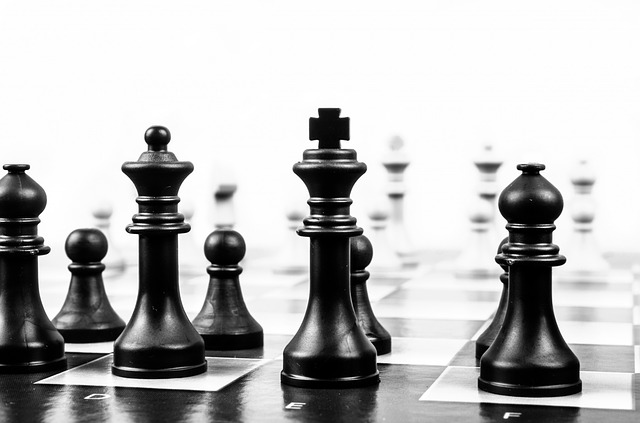
How to play chess
Playing chess is based on putting a series of moves together. At its most basic it revolves around a thought process that takes into account our move and our opponent’s response. We must always keep in mind not only our plans and ideas, but also our opponent’s plans and ideas. Based on this concept, below is a categorization of moves and responses.
A move can be:
a) attacking
b) defensive
c) neutral
d) a mistakeBased on the above, we can establish the following move response pattern:
Attacking move:
Response (generally): defensive.Defensive move:
Response: attacking (or preparation of an attack).Neutral move:
Response: attacking (or preparation of an attack).
Move is a mistake:
Response: Take advantage of mistake.Source: Tratado General de Ajedrez I. Rudimentos by Roberto Grau pg. 40
-
Top 10 Chess Books You Will Ever Need
Updated 12/30/15
From Intermediate to 1800
Master’s of the Chessboard
Improve Your Chess Tactics
100 Endgames You Must KnowFrom 1800-2000
Zurich 1953
My System
Chess Endgame TrainingFrom 2000+
My 60 Memorable Games
GMRAM
Dvoretsky’s Endgame Manual
Test Your Chess IQ – Master ChallengeRelated Posts

